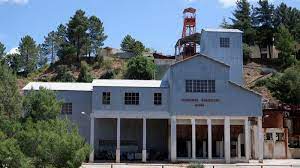Italy bets on quietest of places to host world-leading telescope

Lula: Italy is proposing a disused mineral mine in a remote corner of Sardinia to house one of the world’s most advanced telescopes, hoping that the uncommon stillness of the spot will clinch European Union approval and funds.
The Sos Enathos lead and zinc mine, extending 300 metres underground below lush vegetation, has been picked by the Rome government as its candidate to host the so-called Einstein Telescope (ET).
The breakthrough EU-financed project aims to explore deep space through the study of gravitational waves, and it can only work with when ground vibrations are minimal.
“It will allow us … to see events very close to when the Big Bang happened” around 14 billion years ago, 2021 Physics Nobel Prize winner Giorgio Parisi said.

Parisi and other scientists say the mine is ideal due to the area’s low seismic activity and the absence of settlements nearby, but Italy faces a rival bid from a site in Meuse-Rhine, a region divided among the Netherlands, Germany and Belgium.
The tender will be officially awarded no sooner than the end of next year.
Italy is betting that its 1.9-billion-euro ($2.09 billion)project can bring much-needed investment to the island of Sardinia, one of the country’s poorest regions.
The government has already invested 50 million euros of EU post-pandemic recovery funds in its bid, including a feasibility study.
Gravitational waves, the ripples in space and time predicted by Albert Einstein, are caused by the collision of celestial entities like black holes.
The telescope is expected to capture the waves and observe a volume of the universe much larger than is seen by the tools currently used, known as interferometers.
The Italian project’s design envisages a triangle-shaped underground facility with 10-km-long arms.
Mirrors at the end of each tunnel will reflect laser beams whose lengths are affected by the passage of gravitational waves. These minimal variations in length will be analysed by the ET.
Sos Enathos, near the remote town of Lula in eastern Sardinia, was a mining site for at least 2,000 years before being shut down in 1997.
Local authorities now see the telescope as an opportunity to bring new life to an area hit by poor infrastructure, a declining birth-rate and depopulation.
“The mine has become the alternative to the mine,” Mario Calia, the 63-year-old mayor of Lula, said.
Calia, himself a former miner, said the project would leave Lula’s unspoiled natural landscape untouched while bringing in investment.





